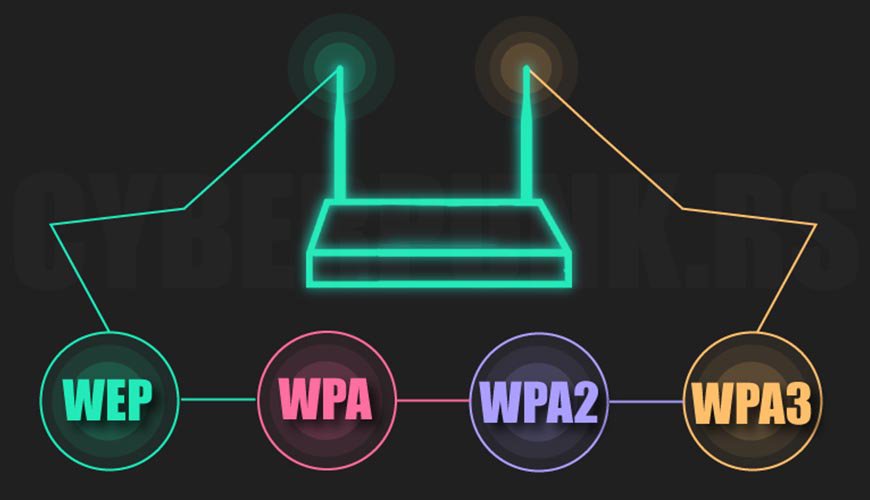WPA vs WPA2 vs WPA3: Key Differences & Which One Is Best
WPA, WPA2, and WPA3 Standards: There are various Wi-Fi Security standards, including WEP, WPA, WPA2, and WPA3, used in Wi-Fi networks. But what is the difference between these standards?
Wi-Fi Security is undoubtedly of particular importance to all of us. Therefore, we always use complex passwords on our modem routers to prevent them from being easily hacked. Wi-Fi Network Security, however, is provided by a series of Security protocols that have abbreviated letters.
Therefore, it is likely that many users will struggle to recognize the superiority of these protocols.
Due to the importance of this issue, we have decided to introduce you to these protocols and examine their differences. Stay tuned for the difference between WPA, WPA2, and WPA3.
Introducing the differences between WPA, WPA2, and WPA3 standards
WPA
The first Security protocol used in the Wi-Fi world was the Wired Equivalent Privacy (WEP) protocol. Still, with the increase in the number of cryptographic keys, WEP has encountered numerous Security holes in recent years, making it practically inefficient and vulnerable to simple hacking through free software, which can easily compromise passwords using this protocol.
To address the problems of WEP, in 2003, the introduction of WPA, which stands for Wi-Fi Protected Access, occurred. The protocol, which itself has several versions, including WPA-PSK, uses 256-bit keys.
The protocol was equipped with features such as MIC (to detect modified packets between two points and enhance System integrity). However, TIKP was designed to be WEP-compliant. This is why WPA is not as strong against attacks as WEP.
WPA2
This trend continued until 2006, when the introduction of the WEP 2 protocol was observed. Instead of TKIP, the protocol used the AES and CCMP algorithms, which were much more powerful. WPA2 still uses TKIP.
The same changes made WPA2 much more secure than WPA, but there were still problems. This Problem is more common in large organizational networks.
WPA3: The latest Network Security standard
In 2018, however, the WPA3 protocol was introduced. WPA3, the latest Security standard developed, is more secure than previous standards. This standard addresses one of the most significant issues with modems. WPA3 essentially prevents hacking of wireless modem passwords. This standard prevents obtaining a password through Brute Force (guessing the password by testing all available characters) or other hacking methods.
This standard has taken a cautious approach. You can restrict access to your information, even if a hacker obtains the modem password in any way.
Among the key features of WPA3, we can prevent password hacking, detect and prevent offline attacks, and the forward secrecy feature (if the hacker has already obtained part of the data and, after a while, succeeds in decrypting the password to decrypt this data, they cannot use previous data), and so on. You can read more about the WPA3 Security Standard for Wi-Fi networks, which has been introduced.
WPA2 is still secure
Currently, Wi-Fi networks often use WPA2, and it is worth noting that this standard remains highly secure. As we explained, most attacks and damage occur in large enterprise networks, posing little to no Problem for home networks. This is because WPA2 has undergone constant updates over the years.
WPA2 vs. WPA3: Key Differences
The table below summarizes the significant differences between WPA2 and WPA3 in terms of Security, encryption, and compatibility.
| Feature | WPA2 | WPA3 |
|---|---|---|
| Encryption | AES-128-bit | AES-192-bit (stronger encryption) |
| Key Exchange | 4-way handshake (vulnerable to KRACK) | Dragonfly handshake (SAE, more secure) |
| Authentication | Pre-Shared Key (PSK) | Simultaneous Authentication of Equals (SAE) |
| Password Security | Vulnerable to offline dictionary attacks | Resistant to offline attacks |
| Forward Secrecy | Not supported | Enabled (prevents decryption of past sessions) |
| Side-Channel Protection | No | Protects against cache-based attacks |
| Compatibility | Widely supported | Limited to newer devices |
| Transition Mode | Compatible with WPA | Compatible with WPA2 |
| Adoption | Industry standard | Gradually being adopted |
WPA2-Personal vs. WPA3-Personal
- Security
- WPA2-Personal: Uses TKIP or AES encryption. Weak passwords are vulnerable to offline attacks.
- WPA3-Personal: Uses SAE (Dragonfly handshake), protecting even weak passphrases.
- Key Exchange
- WPA2: 4-way handshake (KRACK attack vulnerability).
- WPA3: SAE handshake (resistant to KRACK).
- Password Protection
- WPA2: No Extra Security for Weak Passwords.
- WPA3: Stronger protection against brute-force attacks.
- Backward Compatibility
- Both support a transition mode for mixed WPA2/WPA3 networks.
WPA2-Enterprise vs. WPA3-Enterprise
- Security
- WPA2-Enterprise: Uses AES-CCMP (128-bit). Secure but has known flaws.
- WPA3-Enterprise: Stronger encryption (192-bit mode available) and better key management.
- Encryption
- WPA2: AES-CCMP (128-bit).
- WPA3:
- Standard mode: AES-CCMP (128-bit).
- 192-bit mode: GCMP-256 (higher Security).
- Authentication
- WPA2: Supports EAP methods (EAP-TLS, PEAP, etc.).
- WPA3:
- Standard mode: Same as WPA2.
- 192-bit mode: Requires EAP-TLS with 384-bit elliptic curve cryptography.
- Deployment
- WPA2: Widely supported.
- WPA3: Requires newer hardware; adoption is growing.
The Role of Protocols in Wi-Fi Security
Protocols define encryption, authentication, and data integrity in wireless networks.
WPA2 Protocols
- AES: Strong encryption (better than TKIP).
- CCMP: Replaces TKIP for enhanced Security.
- 802.1X: Enterprise-grade authentication.
WPA3 Protocols
- SAE: Replaces PSK, preventing offline attacks.
- 192-bit mode: Meets CNSA standards, providing government-grade Security.
- Forward Secrecy: Prevents decryption of past sessions.
Conclusion
WPA3 improves upon WPA2 by introducing stronger encryption (192-bit), SAE authentication, and forward secrecy, thereby addressing vulnerabilities such as KRACK and offline attacks. While WPA2 remains widely used, WPA3 is the future of secure Wi-Fi.
Key Takeaways
- WPA3 is more secure, offering better encryption, SAE, and forward secrecy.
- WPA2 is still widely used, but it has known vulnerabilities.
- Enterprise networks benefit most from WPA3’s 192-bit mode.
- Transition modes allow gradual adoption without breaking compatibility.
FAQ
What is the main difference between WPA, WPA2, and WPA3?
WPA was the first standard to improve Wi-Fi security after WEP, using TKIP. WPA2 introduced stronger encryption with AES, and WPA3 further enhances security with features like individualized data encryption and protection against brute-force attacks.
Why is WPA3 considered more secure than WPA2?
WPA3 includes modern cryptographic protocols, uses Simultaneous Authentication of Equals (SAE) instead of PSK, and provides forward secrecy, making it much harder for attackers to crack the network.
Can older devices connect to WPA3 networks?
Not all older devices support WPA3. However, most modern routers offer a WPA2/WPA3 mixed mode to maintain compatibility with older hardware.

